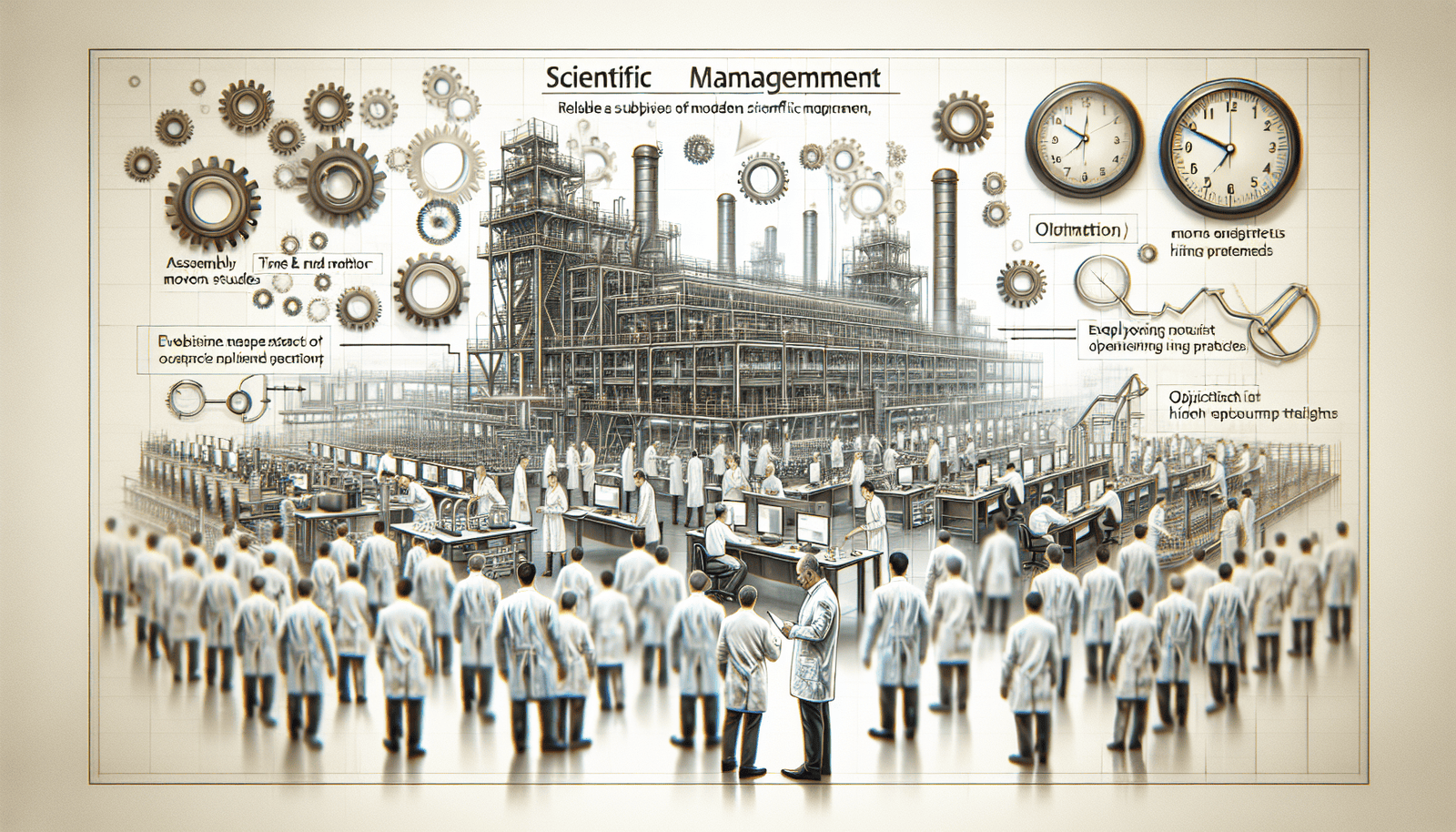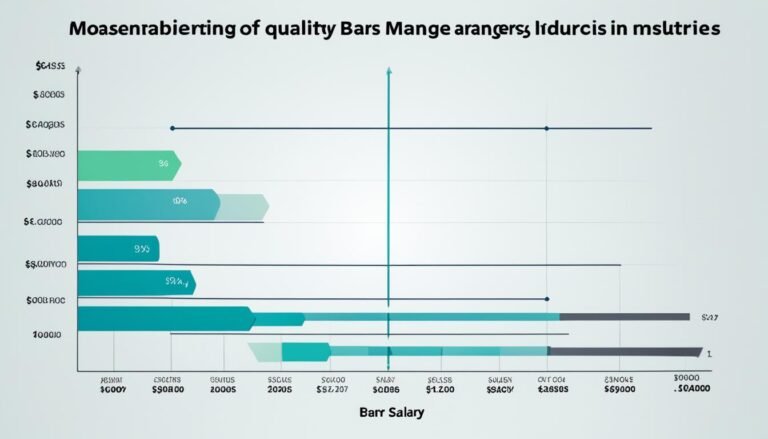Unleashing Efficiency: Exploring the Scientific Management Definition
Getting the Gist of Scientific Management
Scientific management, or Taylorism, is a management theory cooked up by Frederick Winslow Taylor back in the late 1800s and early 1900s. The whole idea was to make work more efficient by using scientific methods to figure out the best way to get things done. Let’s break down where it came from and what it’s all about.
Where It All Started
Frederick Winslow Taylor, a mechanical engineer with a knack for shaking things up, is the brains behind scientific management. He started tinkering with his ideas in the 1880s and 1890s, and by the 1910s, his methods were making waves. Taylor ran experiments at his steel plant, and the results were pretty wild—some say productivity tripled.
The Nuts and Bolts of Scientific Management
Taylor’s principles of scientific management are all about using science to make work better and faster (Wikipedia). Here’s the lowdown:
-
Creating a Science for Each Job: Taylor believed in breaking down every job into tiny steps and figuring out the best way to do each one. It’s like turning work into a science experiment to find the most efficient methods.
-
Picking the Right People for the Job: Taylor thought it was crucial to match workers with tasks that suited their skills and abilities. It’s all about getting the right person in the right spot.
-
Training Workers Properly: Taylor pushed for giving workers the training they needed to do their jobs well. The idea was that well-trained workers would be more competent and confident.
-
Teamwork Between Managers and Workers: Taylor emphasized that managers and workers should work together harmoniously. Good vibes between management and staff were seen as key to getting the best results.
To put these principles into action, Taylor used tools like time and motion studies, functional foremanship, and standardizing tools and movements (Wikipedia). These tools were all about cutting out wasted effort and boosting productivity.
Knowing where scientific management came from and what it’s all about helps us see how it can be used in different industries. To get a better idea of how it works in the real world, let’s check out how L’Oreal has put scientific management into practice.
Making Work Smarter: Scientific Management in Action
Scientific management is all about making work smarter, not harder. It’s been a game-changer in many industries, boosting efficiency and productivity. Let’s see how it works in different fields and take a peek at how L’Oreal has nailed it.
How It Works in Different Industries
Scientific management isn’t just for factories. It’s like a Swiss Army knife for any business, from manufacturing to services and even office work. By breaking down tasks, spotting hiccups, and smoothing out processes, companies can get more done with less hassle.
Take automating tasks, for example. Adding subscribers to a mailing list can be a drag if done manually. But with automation, it’s a breeze, freeing up time for more important stuff. The beauty of scientific management is that it can be tweaked to fit any industry, helping businesses hit their stride.
L’Oreal’s Secret Sauce: Scientific Management
L’Oreal, the beauty giant, has cracked the code with scientific management. By streamlining and standardizing their processes, they’ve ramped up productivity and made the most of their gear.
Here’s how they do it: L’Oreal uses scientific methods to pick, train, and develop their workers based on what they’re good at. This means everyone is set up to shine in their roles. They also push for teamwork between employees and management, creating a great work vibe and encouraging folks to step up early in their careers (Faiza127). This team spirit makes for a smooth-running ship where everyone is on the same page (Faiza127).
Thanks to scientific management, L’Oreal has hit high marks in productivity, quality, and employee happiness. They’ve embraced key principles like standardization, specialization, and teamwork to build a buzzing, efficient workplace.
L’Oreal’s story shows how scientific management can work wonders in the real world, driving success and productivity in any organization.
Scientific management has come a long way and keeps evolving. Up next, we’ll dive into its impact over the years and how it’s still making waves today.
The Impact and Evolution of Scientific Management
Scientific management, or Taylorism, has left a mark on how we manage work and continues to evolve. Let’s dive into how it shaped the 20th century and its modern-day applications.
Taylorism in the 20th Century
Frederick Taylor’s scientific management principles revolutionized productivity and labor relations. By using scientific methods to analyze and optimize work processes, Taylorism boosted productivity, allowing the same amount of goods to be produced with fewer workers or working hours. This efficiency, however, sometimes stirred up labor disputes as workers and owners clashed over the distribution of financial gains. Despite these short-term hiccups, the long-term benefits of increased productivity generally improved the standard of living for consumers.
Modern Applications of Scientific Management
Scientific management didn’t just stop at factories. It branched out into operations management, operations research, and management cybernetics, laying the groundwork for quality assurance, total quality management in the ’80s, and “re-engineering” in the ’90s.
But Taylorism’s influence goes beyond manufacturing. It’s found its way into human resources, sports, offices, medicine (think managed care), and even the military. Take Google, for example. Their productivity methods are rooted in Taylorism, blending in behavioral science to boost knowledge worker productivity. High-tech companies also use nudge management, a concept derived from Taylorism, to enhance employee performance. Even the service sector in post-industrial economies has adopted practices from scientific management.
Taylor’s principles—developing a true science of job tasks, scientifically selecting and educating workers, and fostering cooperation between managers and workers—continue to shape management practices today. Tools like time and motion studies, functional foremanship, and standardization of tools and movements support these principles.
In a nutshell, scientific management, or Taylorism, has had a lasting impact on management theory and practice. It has evolved into various disciplines and continues to find applications across different sectors. By embracing Taylor’s principles, managers and leaders can boost productivity, streamline work processes, and foster better cooperation between managers and workers.
Criticisms and Opposition to Scientific Management
Even though scientific management made waves in the business world, it didn’t win everyone over. Two big groups that weren’t fans? Labor unions and folks worried about ethics.
Labor Union Resistance
Labor unions, with leaders like Samuel Gompers from the American Federation of Labor (AFL), were not thrilled about scientific management. They saw it as a threat, making jobs too specialized, pushing out skilled workers, and messing with workers’ health and bargaining power. Basically, they felt it turned people into robots (Wikipedia).
Unions argued that scientific management led to skilled workers losing their jobs, more unemployment, and worse health and pay for workers. The fear of being replaced by less-skilled workers or machines sparked conflicts and strikes. This strong pushback from unions slowed down the spread of scientific management.
Ethical Concerns and Worker Discontent
There were also ethical worries. Critics said scientific management made work boring and unfulfilling, treating workers like parts in a machine. The focus on efficiency often ignored workers’ well-being and job satisfaction, leading to unhappy and unmotivated employees.
The system’s obsession with time and motion studies and standardizing tools and movements made people worry about losing craftsmanship and personal freedom. Breaking down complex tasks into simple, repetitive actions only made workers more dissatisfied.
To tackle these issues, supporters of scientific management started looking for ways to make work better for employees and keep them engaged. But the bad vibes from unions and the negative view of scientific management stuck around for a while.
Despite all the criticism, scientific management still had a big impact on how we think about managing businesses. It set the stage for modern management principles and techniques. Over time, management practices have evolved to balance efficiency with worker well-being, job satisfaction, and ethical considerations.
Next up, we’ll dive into how scientific management shaped the 20th century and its modern-day applications.








